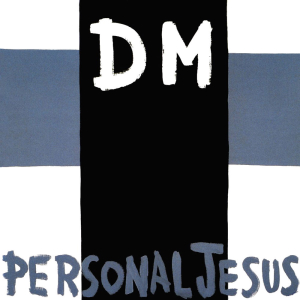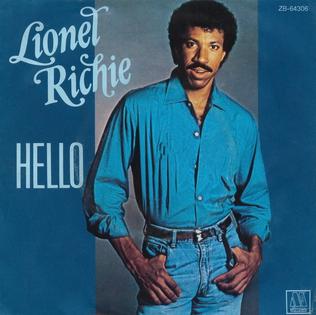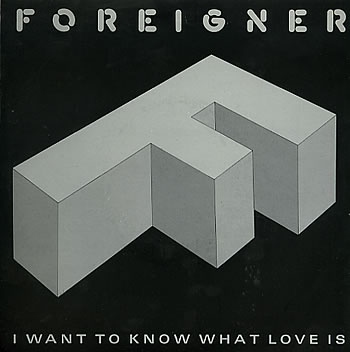 Slick Rick’s “Children’s Story” stands as one of the most iconic and influential tracks in hip-hop history, blending vivid storytelling, compelling social commentary, and an unforgettable beat into a powerful cautionary tale. Released in 1988 on his debut album The Great Adventures of Slick Rick, the song quickly distinguished itself as a masterclass in narrative rap and remains a cornerstone of classic hip-hop culture. With its distinct style, memorable lyrics, and hard-hitting message, “Children’s Story” has transcended decades, continuing to resonate with listeners both old and new as a timeless reminder of the harsh realities faced by urban youth.
Slick Rick’s “Children’s Story” stands as one of the most iconic and influential tracks in hip-hop history, blending vivid storytelling, compelling social commentary, and an unforgettable beat into a powerful cautionary tale. Released in 1988 on his debut album The Great Adventures of Slick Rick, the song quickly distinguished itself as a masterclass in narrative rap and remains a cornerstone of classic hip-hop culture. With its distinct style, memorable lyrics, and hard-hitting message, “Children’s Story” has transcended decades, continuing to resonate with listeners both old and new as a timeless reminder of the harsh realities faced by urban youth.
At the heart of “Children’s Story” lies Slick Rick’s unparalleled ability as a storyteller. Born Richard Martin Lloyd Walters in London and raised in the Bronx, Slick Rick developed a unique voice within hip-hop, marked by a smooth, charismatic delivery and a gift for weaving intricate narratives. “Children’s Story” exemplifies this talent, presenting a fictional but strikingly realistic account of a young man’s descent into crime and eventual downfall. Unlike many contemporary rap songs that might focus on bravado or celebration of street life, Slick Rick takes a cautionary stance, illustrating the consequences of poor choices and the cyclical nature of violence and incarceration.
The song opens with a laid-back, almost nursery rhyme-like melody, immediately drawing listeners in with an air of familiarity and storytelling tradition. This melodic backdrop, crafted by producers Slick Rick and DJ Eric “Vietnam” Sadler, combines a classic funk-inspired bassline with crisp drum programming. The beat is simple yet hypnotic, providing the perfect canvas for Slick Rick’s narrative to unfold. This juxtaposition of a gentle, almost childlike musical tone with the harsh realities described in the lyrics creates a powerful emotional tension that defines the song’s impact.
Slick Rick’s vocal performance on “Children’s Story” is conversational and smooth, almost as if he’s sitting down to tell the story personally. His clear enunciation and distinctive British-American accent add a layer of uniqueness to the delivery, helping to set him apart from other rappers of the era. The track’s structure follows a linear narrative, making it easy to follow while packed with vivid detail and sharp imagery. This approach turns the song into a mini-movie, immersing the listener in the life and choices of the protagonist.
Lyrically, “Children’s Story” is rich with themes of temptation, consequence, and the allure of crime as a perceived shortcut to success. The story centers on a young man who falls into a life of crime, initially attracted by the promise of fast money and respect. Slick Rick paints a clear picture of the character’s mindset and environment, capturing the struggles and pressures faced by many urban youths. The protagonist’s journey from minor misdeeds to a more serious criminal lifestyle is depicted with empathy but without glamorization, highlighting the gradual erosion of hope and the looming threat of tragedy.
One of the song’s most striking elements is its moral core. Slick Rick uses the narrative to impart wisdom, effectively cautioning listeners—especially young people—to avoid the pitfalls of crime and poor decisions. The recurring refrain “Children’s story” underscores the didactic nature of the track, framing it as a parable or lesson meant to educate rather than simply entertain. This pedagogical aspect helped the song resonate widely, making it both a cultural artifact and a practical guide for navigating difficult realities.
The impact of “Children’s Story” extended far beyond its initial release. It became one of Slick Rick’s signature tracks and helped solidify his reputation as one of hip-hop’s greatest storytellers. The song’s influence can be traced through the evolution of narrative rap, inspiring countless artists to explore storytelling as a central element of their craft. Eminem, Nas, and The Notorious B.I.G., among others, have cited Slick Rick’s storytelling style as a key influence on their work. The track also stands as an early example of socially conscious rap, balancing entertainment with meaningful commentary.
Musically, “Children’s Story” exemplifies the golden age of hip-hop production, characterized by its use of sampled funk, soul, and R&B grooves, paired with inventive drum machine programming. The production’s minimalism ensures that the lyrics remain front and center, emphasizing the importance of the story being told. The song’s arrangement allows the narrative to breathe, with subtle musical shifts that underscore changes in tone and tension throughout the tale.
The song also resonates culturally due to its vivid portrayal of urban life during the late 1980s. The economic hardships, limited opportunities, and social challenges faced by many inner-city communities provide a backdrop that listeners both within and outside those communities could recognize. By presenting these issues through the lens of a personal story, Slick Rick humanizes larger social problems, making abstract struggles concrete and relatable.
The visual representation of “Children’s Story” through its music video further amplified the song’s reach and impact. Directed by Anton Furst, the video uses a comic book style to depict the protagonist’s journey, reinforcing the narrative’s parable-like quality. The stylized visuals complement the song’s storytelling approach, making it accessible to a wider audience and enhancing its educational value.
“Children’s Story” also demonstrates Slick Rick’s unique blend of charisma and lyrical skill. While the song carries a serious message, it is delivered with a sense of style and flair that reflects the artist’s personality. His storytelling is engaging and dynamic, marked by clever wordplay, rhythmic precision, and memorable phrases that have become part of hip-hop’s lexicon. This combination of substance and style contributed to the song’s commercial success and critical acclaim.
Over the years, “Children’s Story” has maintained its relevance, frequently sampled and referenced by other artists. Its opening lines and chorus have been echoed in numerous tracks, attesting to the song’s lasting imprint on hip-hop culture. The track’s narrative format has also inspired contemporary artists to explore complex storytelling in their music, ensuring that Slick Rick’s influence endures across generations.
The song’s role as a cautionary tale is particularly poignant considering the real-life struggles faced by many artists and communities represented in hip-hop. “Children’s Story” provides a stark reminder of the stakes involved in choices about crime and lifestyle, underscoring the potential for tragic outcomes. This message remains powerful and necessary, especially as the issues addressed in the song continue to affect urban environments today.
Slick Rick’s ability to craft a story that is both personal and universal is a key factor in the song’s longevity. While the narrative is specific to a particular character and setting, its themes of temptation, consequence, and redemption resonate broadly. The song’s accessible storytelling style allows listeners to see themselves or people they know in the story, fostering empathy and reflection.
The production and songwriting techniques used in “Children’s Story” also highlight the creativity and innovation of hip-hop’s golden era. The use of sampling, rhythmic flow, and lyrical narrative set new standards for what rap music could achieve artistically. Slick Rick’s work demonstrated that hip-hop was not just about beats and rhymes but could also be a vehicle for storytelling, social critique, and cultural expression.
Critically, “Children’s Story” has been praised for its narrative complexity and social awareness. It challenges stereotypes about rap music by presenting a nuanced, thoughtful perspective on issues often overlooked or simplified in mainstream media. The song’s ability to entertain while educating helped broaden the audience for hip-hop and contributed to its acceptance as a legitimate and important art form.
Slick Rick’s persona as a storyteller is inseparable from “Children’s Story.” Known for his distinctive eye patch, British accent, and flamboyant style, he brought a theatricality and charm that made his music stand out. This persona, combined with his lyrical prowess, allowed him to bridge gaps between different audiences and introduce the art of rap storytelling to new listeners.
The song’s enduring popularity is also linked to its replay value. Its compelling narrative, catchy hook, and smooth delivery make it a favorite on hip-hop playlists and radio rotations. Fans appreciate the song not only for its message but for its musicality and Slick Rick’s charismatic performance.
“Children’s Story” also represents a significant moment in the history of hip-hop’s relationship with narrative. Before its release, many rap songs focused on party themes, boastful lyrics, or social commentary delivered through direct statements. Slick Rick introduced a new paradigm where storytelling took center stage, influencing the direction of the genre and inspiring artists to explore more sophisticated lyrical approaches.
The song’s impact is also evident in its crossover appeal. While rooted in hip-hop, its melodic elements, clear storytelling, and universal themes allowed it to reach audiences beyond traditional rap fans. This crossover success helped pave the way for hip-hop’s broader acceptance in popular culture.
Reflecting on the cultural and historical context of “Children’s Story,” it emerges as both a product of its time and a timeless warning. The late 1980s saw significant challenges for many urban communities, including crime, poverty, and systemic inequality. By presenting these issues through a compelling narrative, Slick Rick offered listeners a way to engage with complex social realities through music.
In modern times, “Children’s Story” continues to be relevant, often cited in discussions about hip-hop’s role as a voice for marginalized communities and a tool for social education. The song’s lessons about choices and consequences remain pertinent, highlighting the ongoing struggles faced by many young people.
In conclusion, “Children’s Story” by Slick Rick is more than just a rap song—it is a landmark in the art of hip-hop storytelling and a profound commentary on urban life. Its masterful narrative, memorable production, and moral message have secured its place as one of the genre’s most important works. As a cautionary tale, it continues to educate and inspire, reminding listeners of the power of music to reflect, challenge, and transform society.
Slick Rick’s “Children’s Story” remains a shining example of how hip-hop can combine entertainment with meaningful social critique, and its legacy endures as both a cultural treasure and a call to awareness. Through its engaging story and timeless beat, the song invites each generation to listen, learn, and remember the lessons embedded in its verses—making it truly unforgettable.


